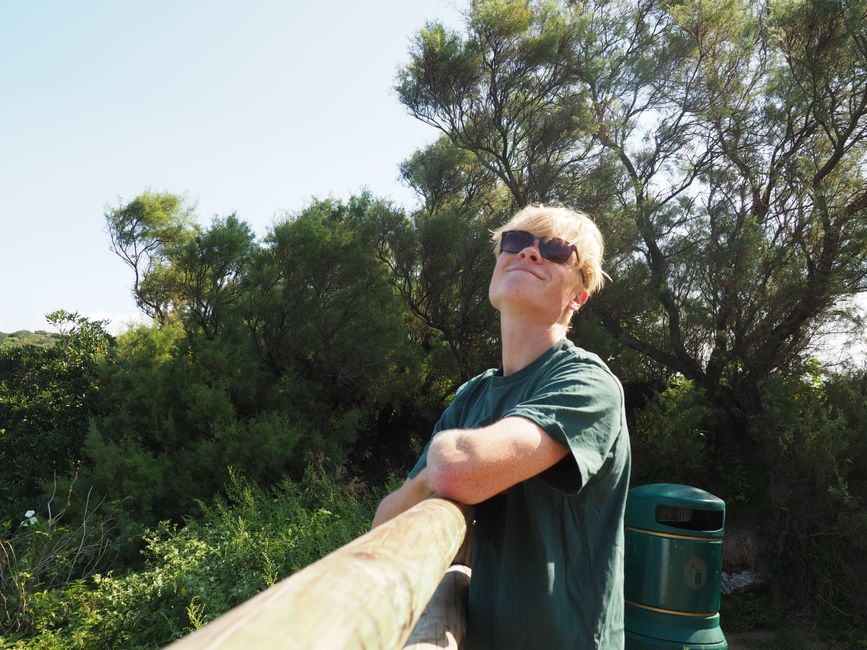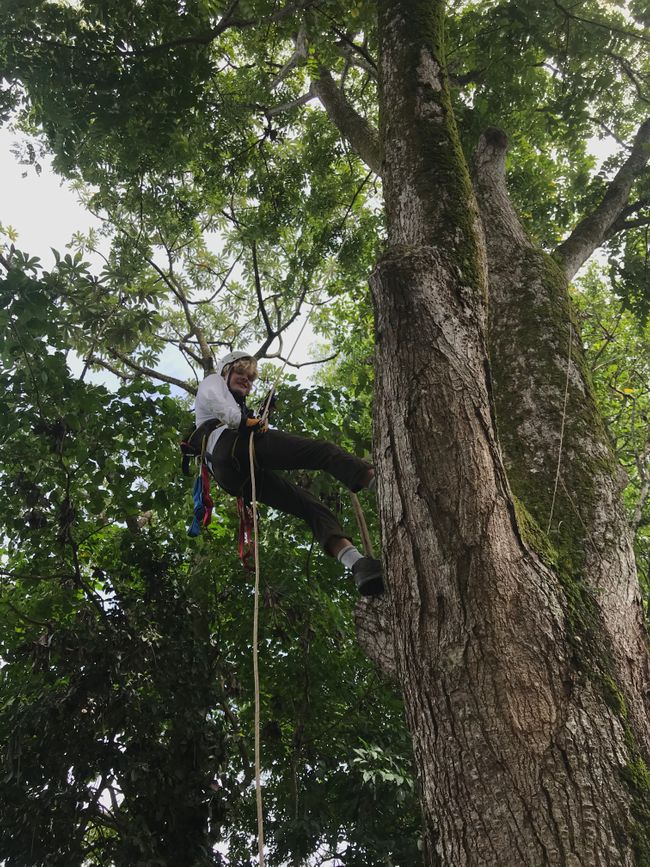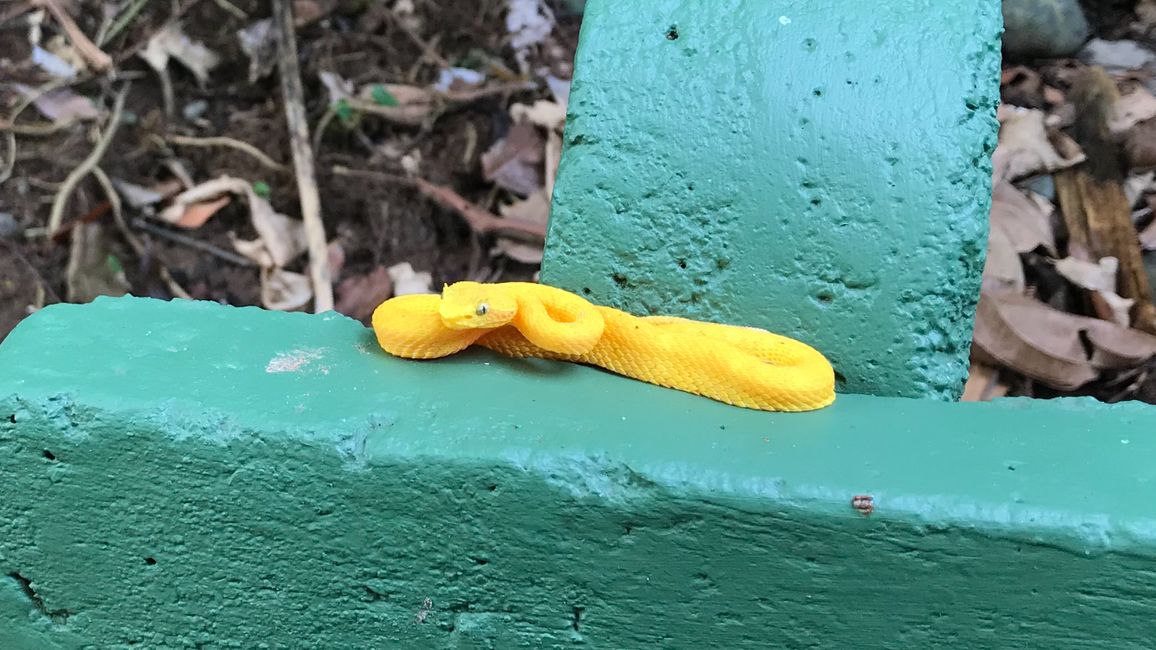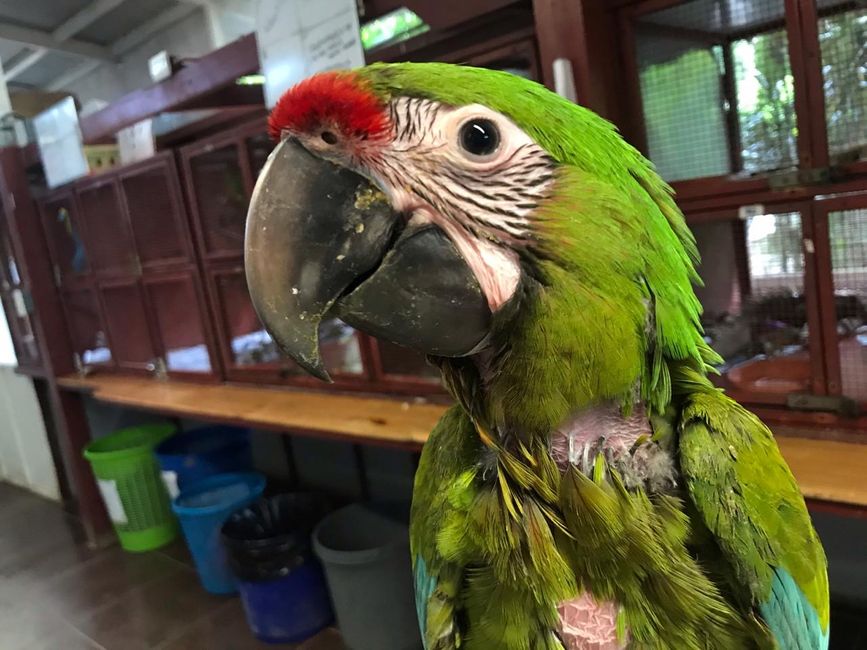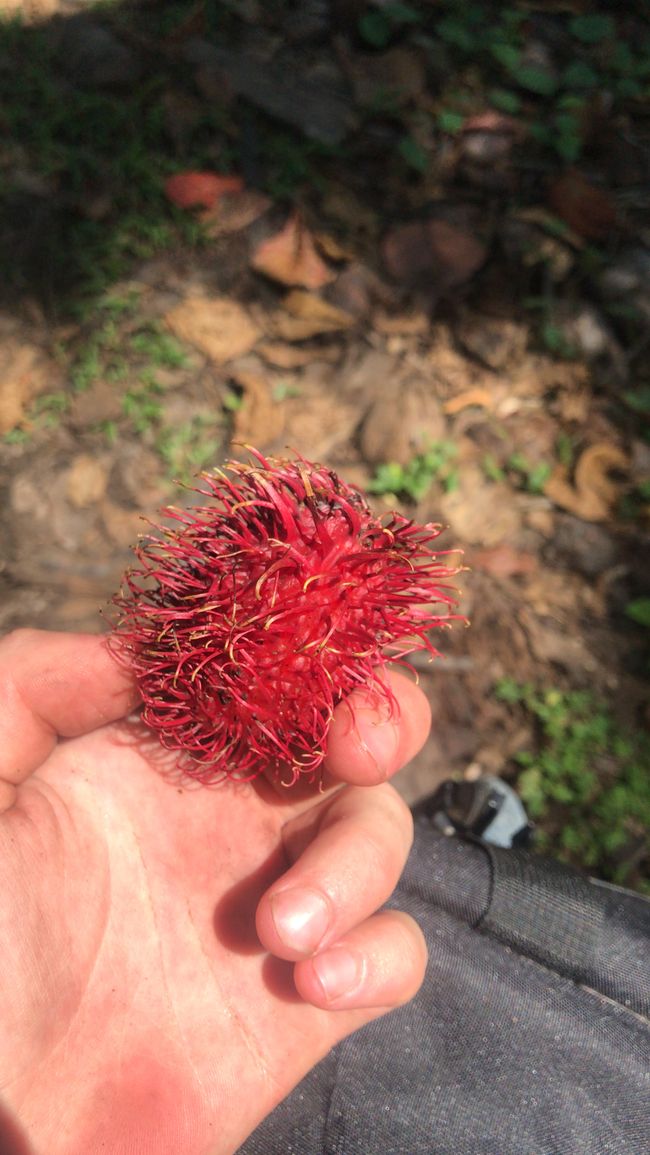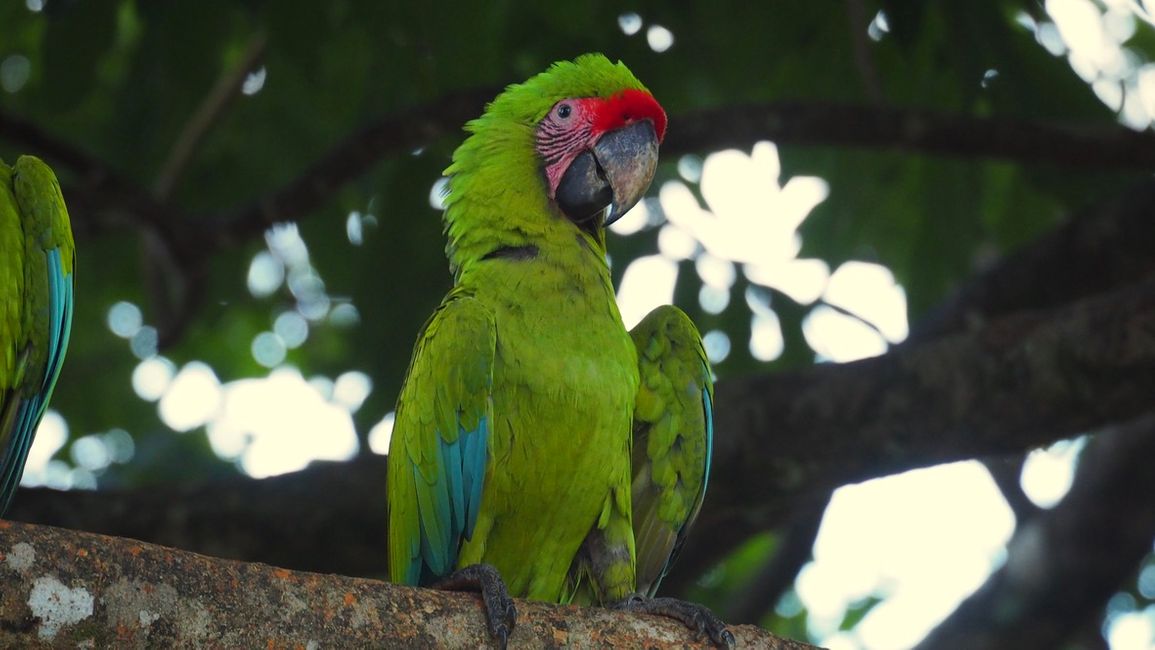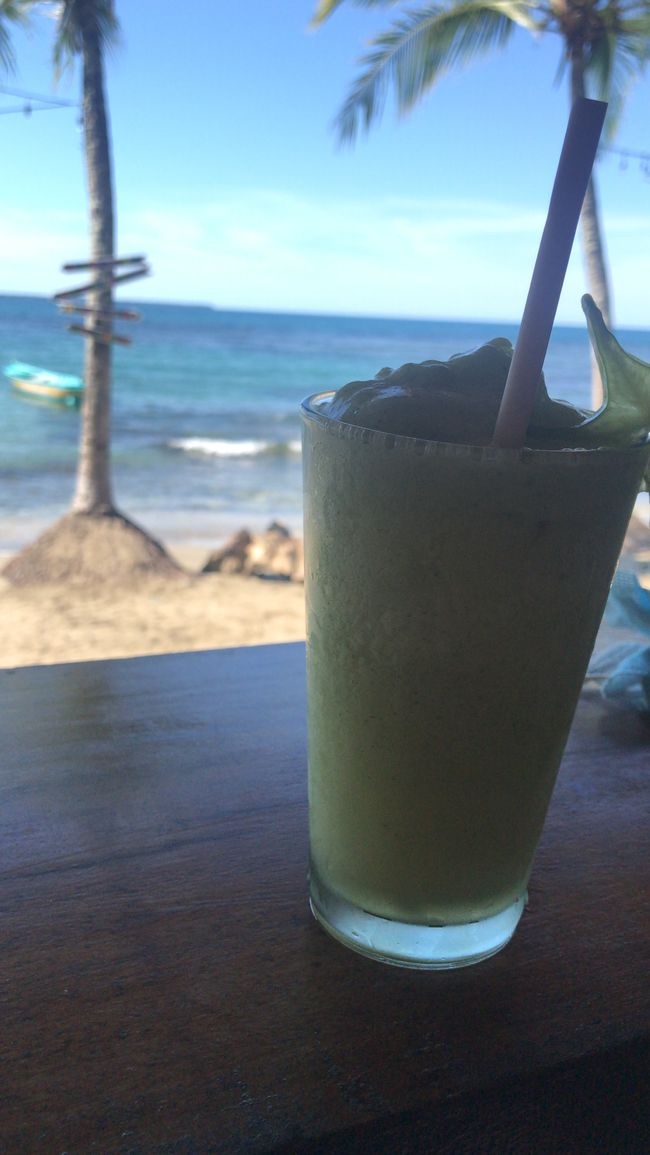Planting plants
Ishicilelwe: 21.10.2020
Bhalisela i-Newsletter
You only need to look around here once to see leaves in hundreds of shades of green and different shapes. Huge leaves that make underlying branches bend when they fall. Small leaves on the ground on plants that weren't there yesterday, and leaves eaten by leaf-cutter ants through which you can see other leaves. Slowly, I am starting to understand the fascination some people have for botany, which I have always been too impatient for until now.
When I drove to Puerto Viejo last Friday, I stopped at every fruit stand along the way and bought all the fruits that weren't already in the front of my bicycle basket. Most of the fruits I had never tried or even seen before. A star fruit costs only 15 cents here. When I got home, I spread out my haul (at least what I hadn't eaten along the way) on the table and made myself a crazy smoothie. Then I came up with the idea of saving the seeds and planting them.
Since plastic bottles cannot be recycled here in Costa Rica, I cut off the bottom half of a plastic bottle and filled it with soil. Then I had to remove the flesh from the seeds and let them dry until I could finally plant them. Because I was still too impatient for just one plant, I repeated the process with seeds from star fruits, mangoes, avocados, passion fruits, cocoa plants, lemons, lychees, and many other fruits whose names I don't know. By now, I have created a small plantation here with 25 plastic containers from the trash.
What else has happened?
I had a lot to do at the station. Sponsors visited us and everything had to be clean. Every other day, I have to collect about 500 beach almonds and remove any rotten spots, because a single colony of bacteria could wipe out the entire Ara population. I also have to feed the macaws twice a day and keep the station clean. After the first feeding, I always help Sara and Duaro with tree climbing. Yesterday, I was allowed to climb a smaller tree myself for the first time. It took me a while to figure out the complicated safety procedure, but now I am ready to climb up to a nesting box at a height of 25 meters for the first time tomorrow.
Yesterday, I also led tourists through the station for the first time. It reminded me a little of the PowerPoint presentations in school. But at this presentation, I don't need index cards because I am really interested in the project. Even though the questions from the Swiss tourists were sometimes really challenging.
It's very funny to see how different tourists react to the macaws. Some just want to take selfies with the macaws, some are too well-equipped with binoculars and bird guides for the experience, and others are so busy filming the macaws with their phones that I feel like they have only seen the macaws on the screen. One family even spent the whole time looking for feathers that had fallen down.
A little boy came to the station on his fifth birthday, and that's when I gave him a particularly large colorful feather. He smiled so much that he thanked me multiple times and tickled my face with the feather. A very beautiful moment.
The evenings are still very long at the station. Especially because the waves are currently too small for surfing. Even though it has something very meditative to it and I have plenty of time to read and play the trumpet, I still hope that more volunteers will come here soon.
Bhalisela i-Newsletter
Phendula (1)
Webmaster
Schön zu lesen, dass Du langsam an die Arbeiten in der Station herangeführt wirst. Aber nach so kurzer Zeit schon Besuchergruppen zu betreuen ist sicherlich eine Herausforderung, zeugt aber auch von einem festen Vertrauen in Deine Fähigkeiten!
Wieder beeindruckende Fotos, besonders die gelbe Schlange auf dem türkis gestrichenen Beton - perfekt arrangiert ;-)
Weiterhin alles Gute
Hartmut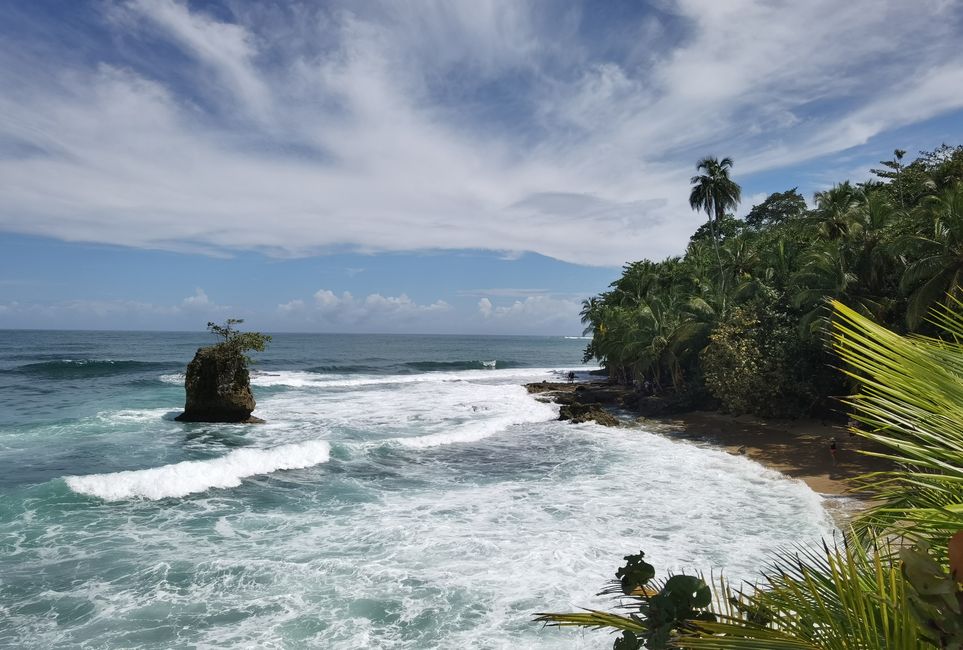
Imibiko yokuvakasha I-Costa Rica

